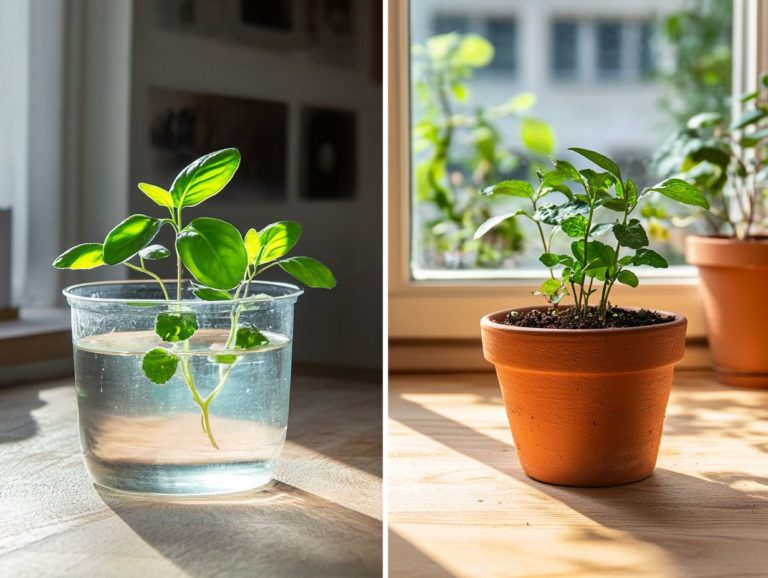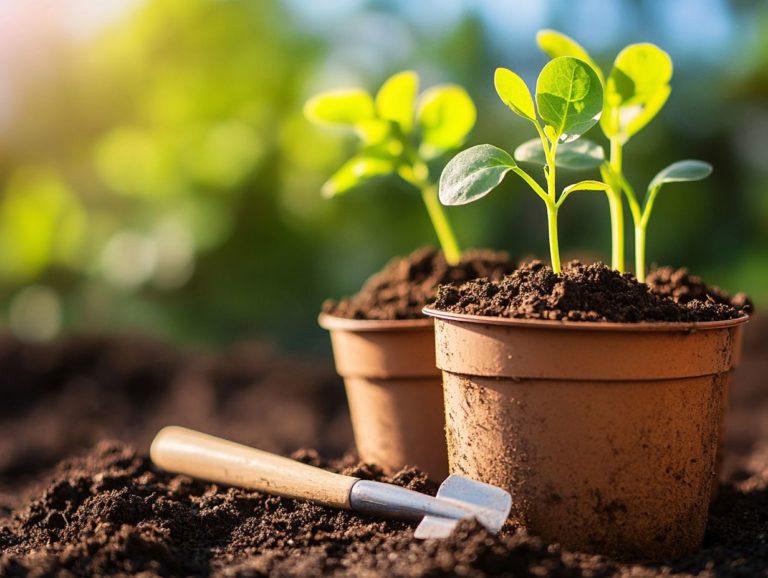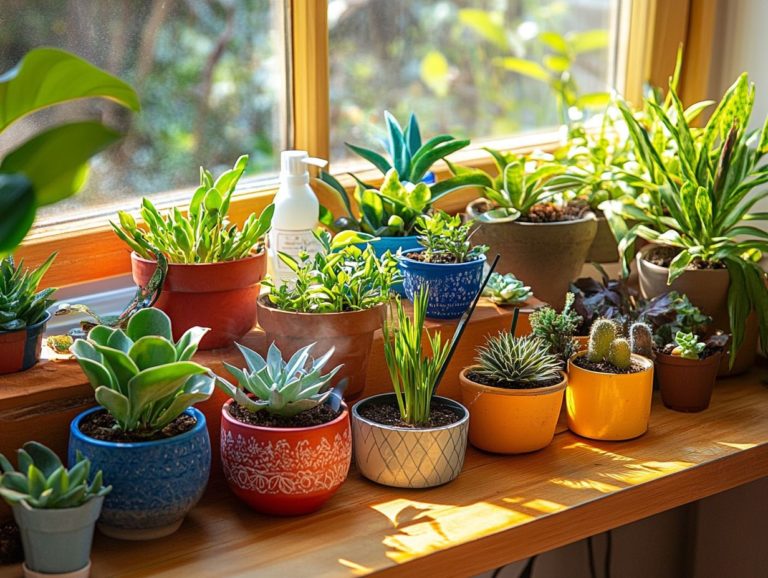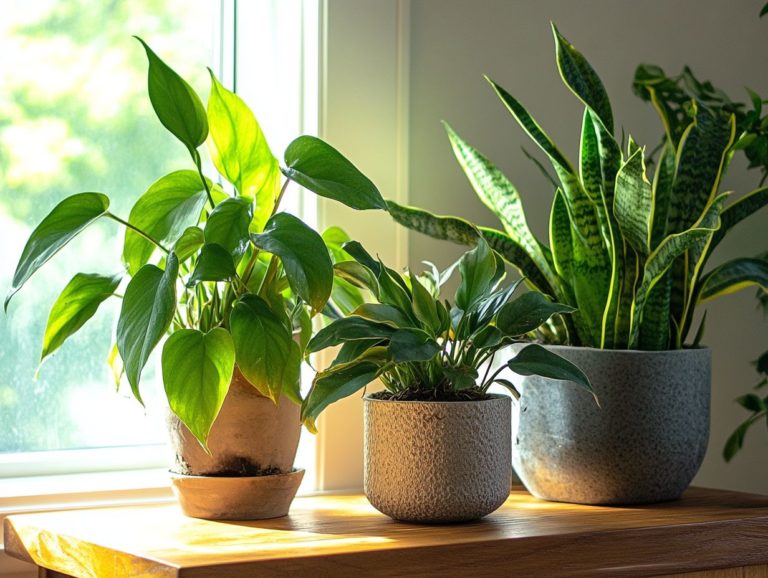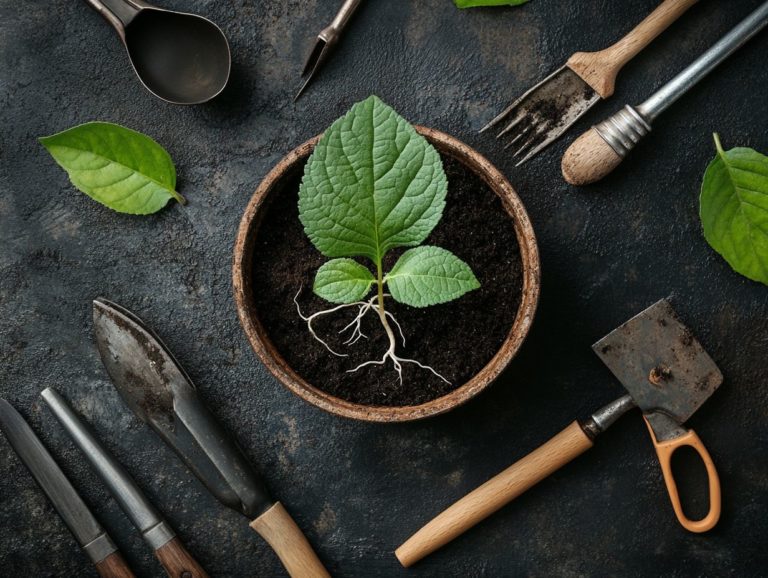Seed vs. Cutting: Which is Better?
When you re looking to propagate plants, the choice between seed propagation and cutting propagation can truly transform your gardening experience!
Each method comes with its unique benefits and drawbacks, influencing aspects from growth speed to genetic diversity. This article delves into the distinctions between these two popular techniques, weighing their pros and cons to help you make an informed decision based on your plant type and desired outcomes.
You will find essential tips to ensure your propagation efforts are successful. Dive in and discover the optimal method that aligns with your gardening aspirations!
Contents
- Key Takeaways:
- Seed Propagation
- Cutting Propagation
- Differences Between Seed and Cutting Propagation
- Factors to Consider When Choosing Between Seed and Cutting
- Tips for Successful Propagation
- Frequently Asked Questions
- What is the difference between seed and cutting?
- Which method is better for growing plants?
- What are the benefits of using seeds to grow plants?
- Are there any downsides to using seeds for plant propagation?
- What are the advantages of using cuttings for plant propagation?
- Are there any downsides to using cuttings to grow plants?
Key Takeaways:
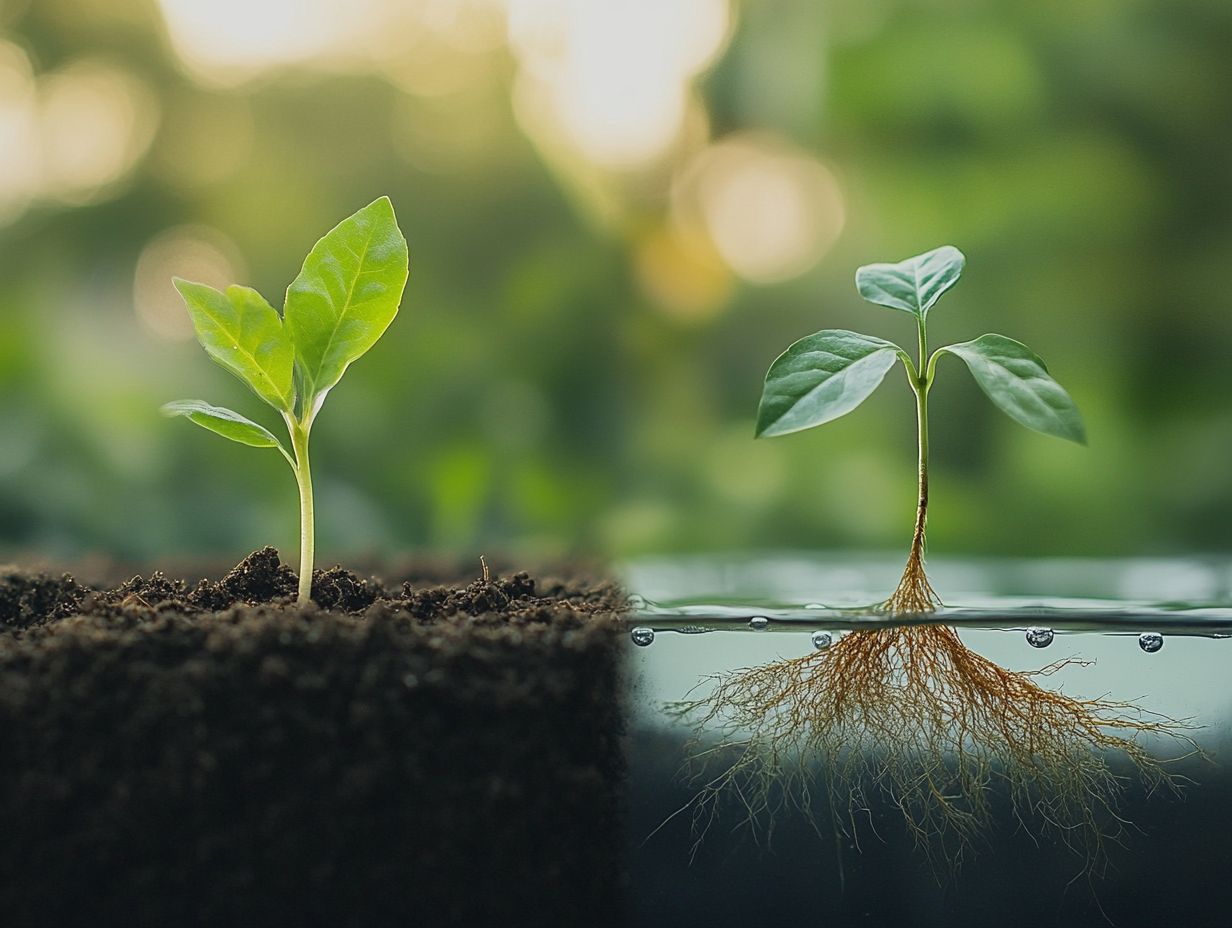
- Seed propagation offers a wider variety of plant options and better genetic diversity, but can take longer to grow and has lower success rates compared to cuttings.
- Cutting propagation is faster and has higher success rates, but is limited to certain plant types and may result in genetic clones of the parent plant.
- When choosing between seed and cutting propagation, consider the plant type and desired results. For specific traits and faster growth, cutting may be the better option, while seed is ideal for genetic diversity and a wider range of plants.
Seed Propagation
Seed propagation is an essential agricultural practice that uses seeds to grow crops. It helps create different types of plants and enables the selection of desirable traits across various plant species.
By understanding the nuances of seed propagation, you can significantly enhance crop yield and resilience, playing a vital role in sustainable agricultural practices.
This method works great for varieties like the Granny Smith apple and Annurca apple, as it promotes the development of new plants capable of thriving in diverse climates.
Advantages and Disadvantages
Seed propagation offers a host of advantages. It allows you to select for desirable traits and achieve higher crop yields. However, it s essential to weigh these benefits against the potential drawbacks for effective agricultural practices.
By embracing seed propagation, you can unlock increased genetic diversity. This means having a variety of different plants that are more adept at thriving in a range of environmental conditions.
This genetic variation not only elevates the visual appeal of your crops but also bolsters their resilience against common pests and diseases. Ultimately, this paves the way for more sustainable farming methods.
Keep in mind that this process can involve a longer germination period, which may not suit those looking for rapid harvests. Additionally, your reliance on specific environmental factors can complicate successful cultivation, presenting challenges that require careful management to achieve optimal results in your farming endeavors.
Cutting Propagation
Cutting propagation is a favored technique among gardeners, allowing you to create genetically identical clones of your prized plants through cuttings! This method not only accelerates the growth process but also offers a reliable way to expand your garden.
By incorporating a special powder that helps roots grow faster, you can significantly boost the success rate of rooting, ensuring that your plants thrive. This approach is widely utilized for various crops, including potatoes, and has captured the attention of the gardening community thanks to its remarkable effectiveness.
Pros and Cons

Cutting propagation presents a wealth of advantages, such as rapid growth and the ability to duplicate desirable traits. Yet, it also introduces certain drawbacks that require your careful consideration for successful gardening.
This technique enables you to swiftly establish new plants from existing ones, ensuring uniformity in growth characteristics, including leaf shape and flowering patterns.
However, it s crucial to be aware that these newly propagated plants may be more vulnerable to diseases, especially if they don t receive optimal care. The environmental conditions necessary for successful rooting can be quite specific, demanding a certain level of expertise.
Thus, while cutting propagation can deliver impressive results, it also requires your meticulous attention to both plant health and the growing environment to truly flourish.
Differences Between Seed and Cutting Propagation
Understanding the nuances between seed propagation and cutting propagation is essential for you as a gardener or farmer. Each method has its own set of advantages, challenges, and success rates that can significantly influence the growth and yield of your crops.
Seed propagation taps into genetic diversity, fostering a rich variety of plants, while cutting propagation focuses on cloning existing plants. Both methods offer distinct pathways to successful cultivation.
Methods and Success Rates
The methods you choose for seed and cutting propagation can dramatically impact your success rates. Each technique demands specific approaches to ensure optimal growth.
In seed propagation, selecting the right seed varieties for your local climate is paramount. Timing your planting to align with seasonal changes is equally important. Techniques such as scratching the seed coat or stratifying can significantly enhance germination rates. Maintaining appropriate moisture levels and temperatures is essential.
For cutting propagation, knowing whether to use softwood or hardwood cuttings is crucial. This choice can help you take advantage of their natural hormone production for robust root development. Environmental factors, such as humidity and light, are also key. Utilizing a misting system or humidity dome can create an ideal atmosphere for growth.
Finally, the right soil composition a well-draining mix of peat and perlite is vital for both methods. Consistent watering is important, but be careful to avoid over-saturation, as this will lead to thriving plants.
Factors to Consider When Choosing Between Seed and Cutting
When weighing your options between seed and cutting propagation, consider several essential factors: the type of plant, your desired outcomes, and the specific growing conditions each method demands.
By grasping these elements, you can make an informed choice and select the most effective propagation technique tailored to your needs.
Plant Type and Desired Results
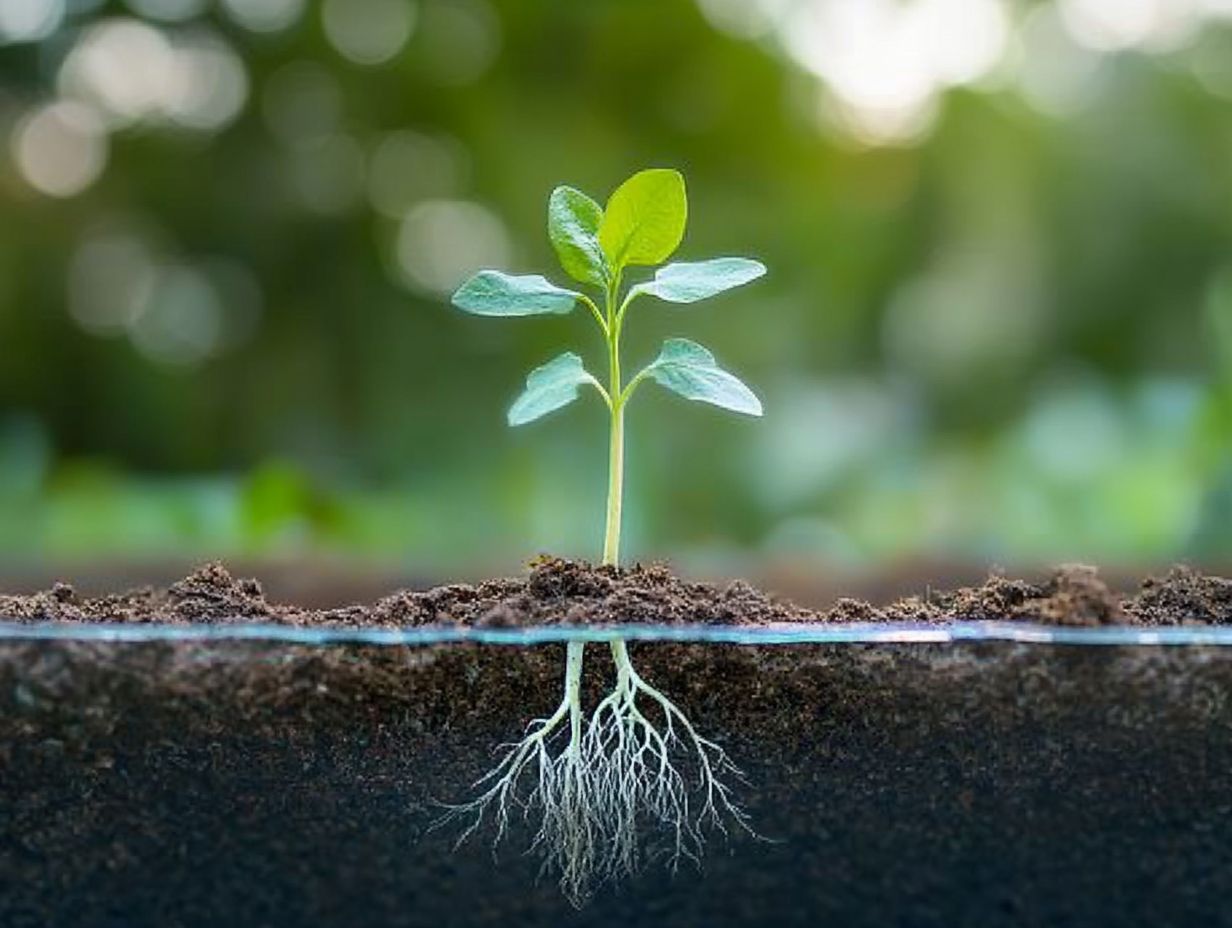
The type of plant you re cultivating and the results you desire play a crucial role in determining whether seed or cutting propagation is the optimal choice for growth.
For instance, certain species, like many perennials, tend to flourish when propagated from cuttings. This method allows you to achieve quicker establishment and consistent plant traits. In contrast, annuals may offer greater genetic diversity and resilience when grown from seeds.
Your decision between these propagation methods can also be shaped by specific goals whether you need faster growth rates for landscaping projects or are aiming for genetic uniformity in commercial crops. This ensures that your plants not only meet market demands but also maintain the desired characteristics.
Tips for Successful Propagation
Let s ensure your propagation journey is a success! Successful propagation, whether you choose seeds or cuttings, relies on adhering to best practices that elevate the growth potential and overall health of your plants. By implementing proven techniques, you can greatly enhance the chances of enjoying a bountiful gardening experience.
Best Practices for Both Methods
Implementing best practices in both seed and cutting propagation can lead to successful growth and robust plants, ensuring your gardening endeavors are fruitful.
To achieve optimal results, consider using high-quality, sterile soil that drains well while retaining some moisture, fostering healthy root development. Careful monitoring of humidity levels is vital; maintaining a consistent environment can significantly enhance growth.
When propagating cuttings, using rooting hormone speeds up the process and promotes stronger root systems. Adopting regular care routines such as gentle misting and ensuring proper ventilation will help minimize the risk of mold or disease.
By understanding the specific needs of different plant varieties, you can tailor your approaches, dramatically increasing your chances of success in your gardening journey.
Frequently Asked Questions
What is the difference between seed and cutting?
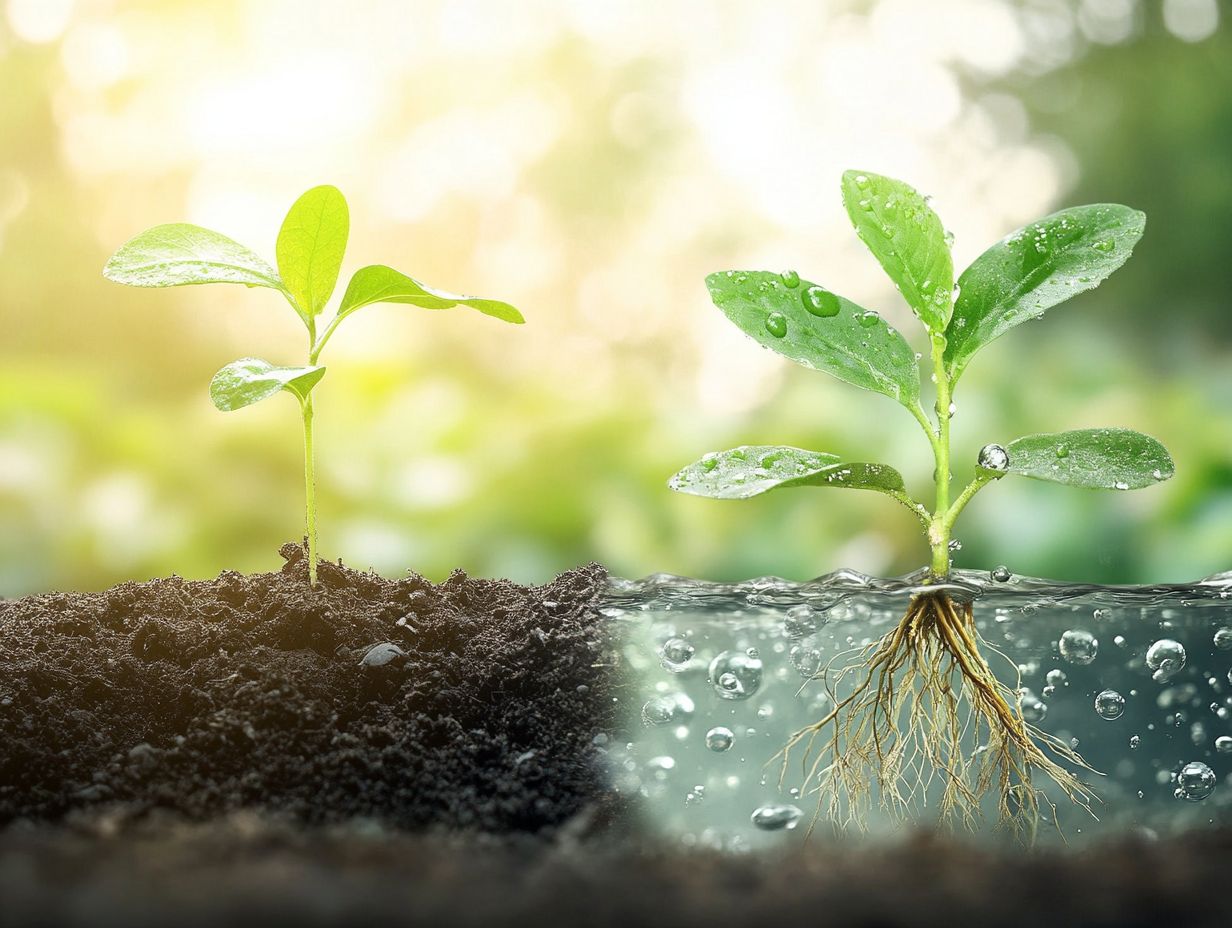
Seeds are parts of a plant that help reproduce. Cuttings are sections of a plant that you cut off and plant again.
Which method is better for growing plants?
Choosing between seeds and cuttings depends on the plant type and your preferences. Each method has unique benefits and drawbacks.
What are the benefits of using seeds to grow plants?
Seeds, like those from Granny Smith or Annurca apples, are easy to find and come in many varieties. They usually have a higher success rate and can grow more plants at lower costs.
Are there any downsides to using seeds for plant propagation?
Some seeds, like those from potatoes, can be hard to germinate. Controlling the quality of plants from seeds can also be challenging.
What are the advantages of using cuttings for plant propagation?
Cuttings allow you to grow identical plants, called clones, and can produce mature plants faster than seeds. This method is perfect for plants that don t produce seeds.
Are there any downsides to using cuttings to grow plants?
Cuttings need more care since they have a higher risk of not rooting properly. They also have a shorter shelf life than seeds.

